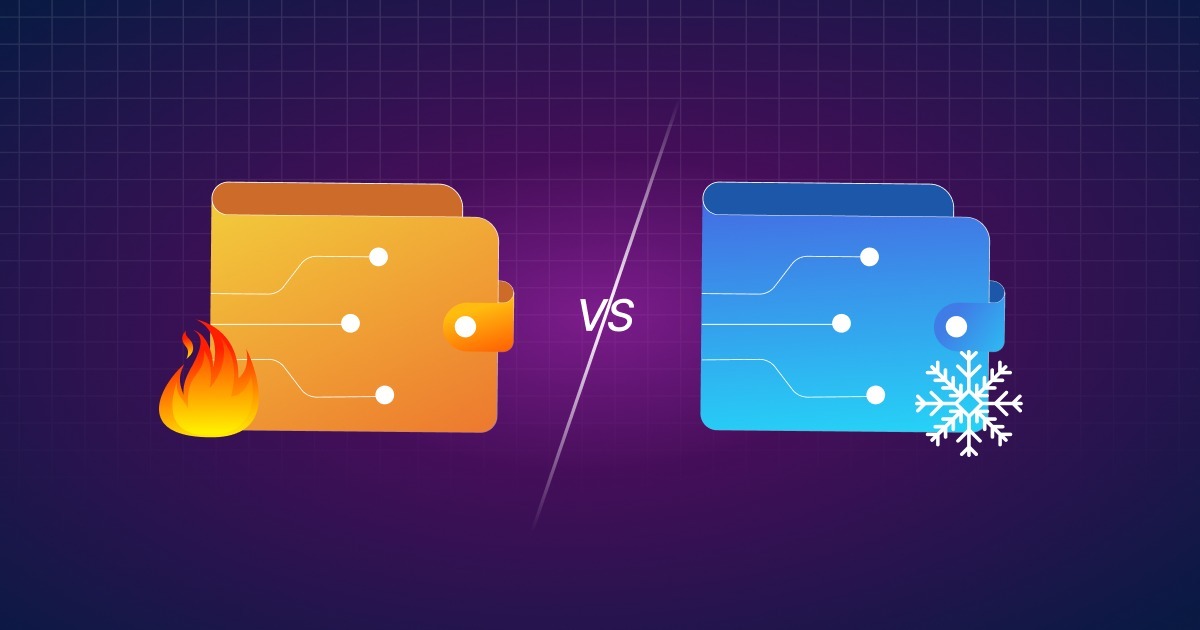So, you’ve bought some Bitcoin. Maybe a little Ethereum. Perhaps you’ve even dabbled in that obscure altcoin your cousin swears will make you rich.
Welcome to the world of crypto wallets—the digital equivalent of keeping your cash either in your back pocket or buried in a bank vault. If you’re even remotely serious about crypto in 2025, understanding the types of crypto wallets—and the difference between hot wallets vs cold wallets—isn’t optional. It’s essential.
Let’s unpack it, simply and clearly.
Table of Contents
What Is a Crypto Wallet, Anyway?
At its core, a crypto wallet isn’t like a traditional wallet stuffed with notes and receipts. It doesn’t “store” your coins physically. Instead, it holds the private keys that give you access to your digital assets on the blockchain.
Think of it as the password to your crypto vault. If someone gets access to that key, they’ve got your money. That’s why choosing the right type of wallet matters.
Hot Wallets: Convenient, Connected, and a Bit Risky
Hot wallets are connected to the internet. That means they’re fast, easy to use, and ideal for frequent traders or users who require quick access to their cryptocurrency.
Also Read: What Is Staking in Crypto? Explained Simply
Examples of Hot Wallets:
- Mobile wallets (like Trust Wallet or MetaMask)
- Desktop wallets (like Electrum or Exodus)
- Web wallets (such as those provided by exchanges like Coinbase or Binance)
Pros of Hot Wallets:
- Quick and convenient access to funds
- Ideal for trading and daily transactions
- Many are free and user-friendly
Cons:
- Because they’re online, they’re vulnerable to hacking
- Not ideal for long-term or high-value storage
- You’re often trusting third parties (especially with exchange wallets)
In short, Hot wallets are like carrying a debit card. Super convenient, but you wouldn’t want your life savings on it.
Cold Wallets: Offline, Secure, and Built for HODLing
Cold wallets are offline wallets, not connected to the internet, which makes them far less susceptible to hacks or phishing attacks.
Examples of Cold Wallets:
- Hardware wallets (like Ledger Nano X or Trezor)
- Paper wallets (literally your private keys printed on paper and stored securely)
- Air-gapped wallets (devices never connected to the internet)
Pros of Cold Wallets:
- Superior security — ideal for long-term storage
- Immune to most forms of cyberattacks
- You retain full control over your assets
Cons:
- Not great for quick transactions
- Hardware wallets cost money ($50–$150 on average)
- Lose the device or paper, and you may lose access forever (unless you’ve backed it up properly)
Bottom line: Cold wallets are the equivalent of putting your crypto in a digital safe-deposit box. Not flashy, but very secure.

Hot Wallet vs Cold Wallet: Which One Should You Use?
It all boils down to how you use crypto.
| Use Case | Recommended Wallet Type |
| Daily trading & transactions | Hot Wallet |
| Long-term holding (HODLing) | Cold Wallet |
| Newbie with small amounts | Start with a Hot Wallet |
| High-value investor | Get a Cold Wallet |
| Security-focused users | Cold or Hybrid Setup |
Many seasoned investors use both—a hot wallet for spending and small trades, and a cold wallet to store the bulk of their portfolio safely. It’s the best of both worlds.
Security Tips Regardless of Wallet Type
- Use strong passwords (and don’t reuse them)
- Enable 2FA wherever possible
- Backup your recovery phrases and store them offline
- Avoid phishing scams—always double-check URLs and never share your private keys
Remember, in crypto, you are your bank. That means full control… but also full responsibility.
Final Thoughts
Choosing the right crypto wallet in 2025 isn’t just about convenience—it’s about security, control, and how you plan to use your assets. Whether you lean toward the ease of a hot wallet or the fortress-like protection of a cold one, make your choice wisely.
Because in the world of crypto, the one holding the keys holds the coins. Literally.
Reference: https://www.investopedia.com/hot-wallet-vs-cold-wallet-7098461




